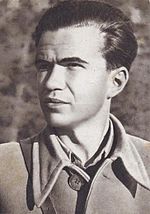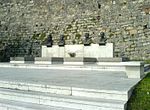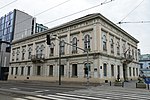Monument of Gratitude to France

Monument of Gratitude to France (Serbian: Споменик захвалности Француској, romanized: Spomenik zahvalnosti Francuskoj) in Belgrade's Veliki Kalemegdan Park was formally unveiled on 11 November 1930, the 12th anniversary day of the end of the First World War, in the presence of King Alexander and Queen Maria, the royal government, the delegation of the French government, Serbian war veterans, distinguished citizens, associations, schools, and a large crowd of people.It was noted as one of the first "public monuments on one national territory, where the perception of another (nation) is shown in positive light". It was declared a cultural monument in 1965, and a cultural monument of great significance in 1983.
Excerpt from the Wikipedia article Monument of Gratitude to France (License: CC BY-SA 3.0, Authors, Images).Monument of Gratitude to France
Савско шеталиште, Belgrade Old Town (Stari Grad Urban Municipality)
Geographical coordinates (GPS) Address External links Nearby Places Show on map
Geographical coordinates (GPS)
| Latitude | Longitude |
|---|---|
| N 44.8212 ° | E 20.4512 ° |
Address
Споменик захвалности Француској
Савско шеталиште
11000 Belgrade, Old Town (Stari Grad Urban Municipality)
Central Serbia, Serbia
Open on Google Maps











